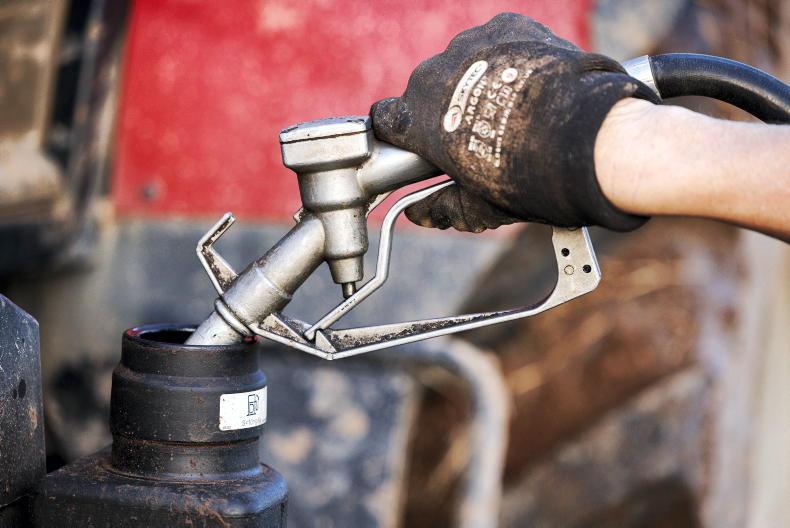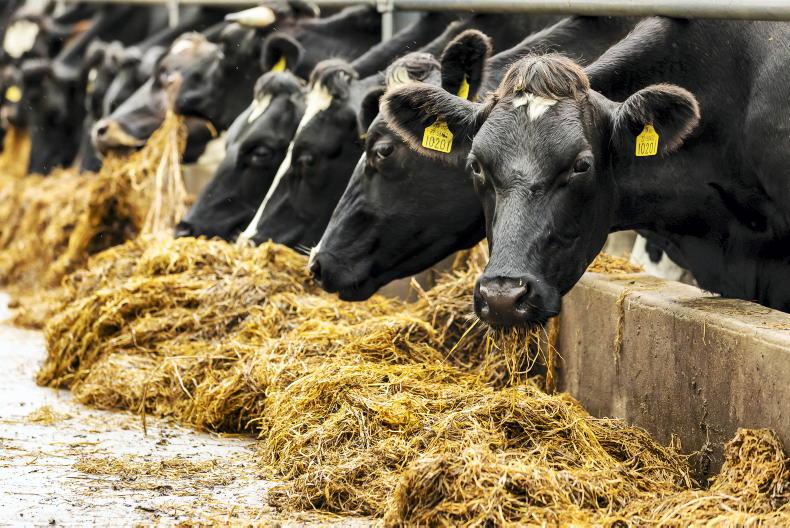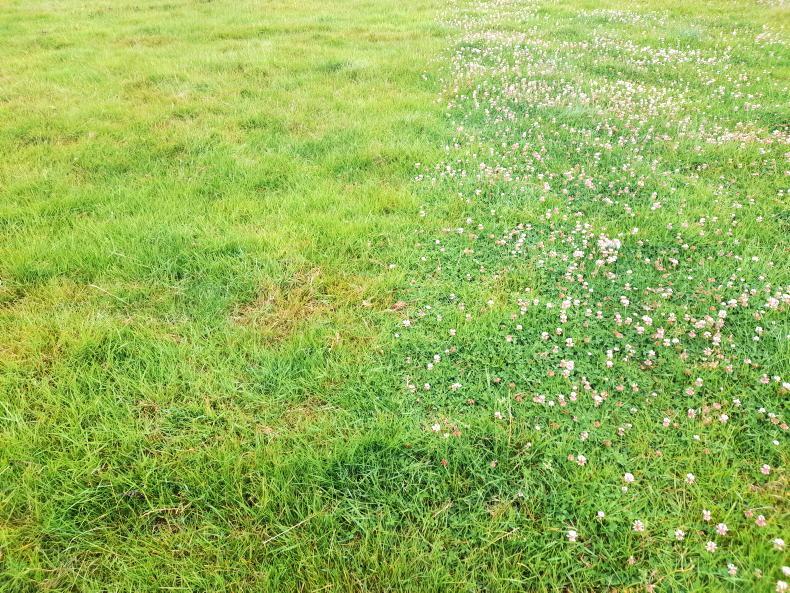Red clover and its silage have had a resurgence in popularity in recent years, likely spurred on by the inflation of fertiliser and feed prices. It’s effectively a win-win for farmers whereby they can grow silage without chemical N and produce a high protein feed that displaces the need to for concentrates.
However, the establishment of red clover and its treatment thereafter differs to that of traditional silage swards – failure to take these differences into account can lead to the failing of the red clover in the sward.
Choosing which field to set a red clover sward in is highly important. Like all reseeds, soil fertility should be good before tilling work begins. P and K indexes should be three or higher, with a pH of 6-6.5. Even with a high pH, it is important to remember that when grassland is tilled, the rotting of the grass surface lowers the pH of the soil, so lime will likely be required to be spread after.
Dry fields with good access should be chosen for sowing. With the ground being used for three or four cuts of silage – and slurry/dung applications in between cuts – there will be a high volume of machinery entering and leaving the field, so access is essential.
Free-draining soils are optimal as they will allow for early cutting of the first and late cutting of fourth as well as the application of organic fertiliser.
Where bales are being made from the red clover silage, paddocks or fields close to the pit are ideal, as they reduce the time spent transporting bales.
Sowing red clover
Red clover can be sown between April and late July, with the earlier sowing date giving an increased return on yield in the establishment year.
The seed should be sown between 0.5c and 1cm below the soil surface in a fine, firm seed bed. Sowing it below this depth may result in failure, as the seed would not have enough energy to emerge. The seed can also be broadcast-spread.
Anecdotal evidence indicates that red
clover establishment generally works best in a full reseed situation as opposed to stitching in.
Red clover can be sown in a monoculture sward (by itself) at a rate of 13-15kg/ha. However, participants in the Department of Agriculture’s red clover silage scheme will have to show receipts for 30kg of red clover gras seed/ha.
Red clover can also be successfully sown alongside perennial ryegrasses and white clover. This will increase the bulk of the crop, soak up excess nitrogen and allow for a suitable sward for grazing when the red clover dies out of the sward in three to five years.
Tetraploid ryegrasses are preferable, as they tiller less than diploids and mature at a similar stage to the red clover. Successful mixtures used by Teagasc have included 13.5kg/ha perennial ryegrass, 13.5kg/ha red clover and 4.5kg/ha white clover, giving good silage yields for four years.
Fertiliser
Where there is a good uptake in red clover in the sward, chemical N will not need to applied, as the crop will fix atmospheric nitrogen. However, with high offtakes of silage through multiple cuts each year, P and K will have to be returned to ground. Organic fertilisers such as slurry can be applied between cuts, with farm yard manure applied in early spring or after the last cut.
Generally, three to four cuts a year of silage can be made, though many farmers opt to mow the fourth cut and let it rot back in to the ground for green manure, as the clover is too difficult to ensile in the latter stages of the year.
Ensiling and grazing guidelines
Swards should be mown at an increased height of 8cm for red clover swards (to avoid crown damage). Wilting will be required, with 36-48 hours generally required as the sward wilts slower than a ryegrass sward.
Tedding or raking of the sward is not recommended, as it can cause damage to the existing stems.
A light grazing can be undertaken instead of a final cut of silage, although many farmers opt not to do this for fear of damaging the red clover plant. Where grazing is done, light cattle such as weanlings are preferable as they are less likely to poach, and grazing should only be done in good ground and weather conditions.
Sheep can be used to grazed the sward, though caution with breeding sheep is required. Red clover contains varying amounts of phyto-oestrogens, which may be linked with lower conception rates in breeding ewes.
Oestrogen from red clover is very mobile and does not accumulate or remain long in the blood. For these reasons, it is recommended to keep ewes off red clover for six weeks either side of mating. This also applies to red clover in silage.
Red clover and its silage have had a resurgence in popularity in recent years, likely spurred on by the inflation of fertiliser and feed prices. It’s effectively a win-win for farmers whereby they can grow silage without chemical N and produce a high protein feed that displaces the need to for concentrates.
However, the establishment of red clover and its treatment thereafter differs to that of traditional silage swards – failure to take these differences into account can lead to the failing of the red clover in the sward.
Choosing which field to set a red clover sward in is highly important. Like all reseeds, soil fertility should be good before tilling work begins. P and K indexes should be three or higher, with a pH of 6-6.5. Even with a high pH, it is important to remember that when grassland is tilled, the rotting of the grass surface lowers the pH of the soil, so lime will likely be required to be spread after.
Dry fields with good access should be chosen for sowing. With the ground being used for three or four cuts of silage – and slurry/dung applications in between cuts – there will be a high volume of machinery entering and leaving the field, so access is essential.
Free-draining soils are optimal as they will allow for early cutting of the first and late cutting of fourth as well as the application of organic fertiliser.
Where bales are being made from the red clover silage, paddocks or fields close to the pit are ideal, as they reduce the time spent transporting bales.
Sowing red clover
Red clover can be sown between April and late July, with the earlier sowing date giving an increased return on yield in the establishment year.
The seed should be sown between 0.5c and 1cm below the soil surface in a fine, firm seed bed. Sowing it below this depth may result in failure, as the seed would not have enough energy to emerge. The seed can also be broadcast-spread.
Anecdotal evidence indicates that red
clover establishment generally works best in a full reseed situation as opposed to stitching in.
Red clover can be sown in a monoculture sward (by itself) at a rate of 13-15kg/ha. However, participants in the Department of Agriculture’s red clover silage scheme will have to show receipts for 30kg of red clover gras seed/ha.
Red clover can also be successfully sown alongside perennial ryegrasses and white clover. This will increase the bulk of the crop, soak up excess nitrogen and allow for a suitable sward for grazing when the red clover dies out of the sward in three to five years.
Tetraploid ryegrasses are preferable, as they tiller less than diploids and mature at a similar stage to the red clover. Successful mixtures used by Teagasc have included 13.5kg/ha perennial ryegrass, 13.5kg/ha red clover and 4.5kg/ha white clover, giving good silage yields for four years.
Fertiliser
Where there is a good uptake in red clover in the sward, chemical N will not need to applied, as the crop will fix atmospheric nitrogen. However, with high offtakes of silage through multiple cuts each year, P and K will have to be returned to ground. Organic fertilisers such as slurry can be applied between cuts, with farm yard manure applied in early spring or after the last cut.
Generally, three to four cuts a year of silage can be made, though many farmers opt to mow the fourth cut and let it rot back in to the ground for green manure, as the clover is too difficult to ensile in the latter stages of the year.
Ensiling and grazing guidelines
Swards should be mown at an increased height of 8cm for red clover swards (to avoid crown damage). Wilting will be required, with 36-48 hours generally required as the sward wilts slower than a ryegrass sward.
Tedding or raking of the sward is not recommended, as it can cause damage to the existing stems.
A light grazing can be undertaken instead of a final cut of silage, although many farmers opt not to do this for fear of damaging the red clover plant. Where grazing is done, light cattle such as weanlings are preferable as they are less likely to poach, and grazing should only be done in good ground and weather conditions.
Sheep can be used to grazed the sward, though caution with breeding sheep is required. Red clover contains varying amounts of phyto-oestrogens, which may be linked with lower conception rates in breeding ewes.
Oestrogen from red clover is very mobile and does not accumulate or remain long in the blood. For these reasons, it is recommended to keep ewes off red clover for six weeks either side of mating. This also applies to red clover in silage.










SHARING OPTIONS